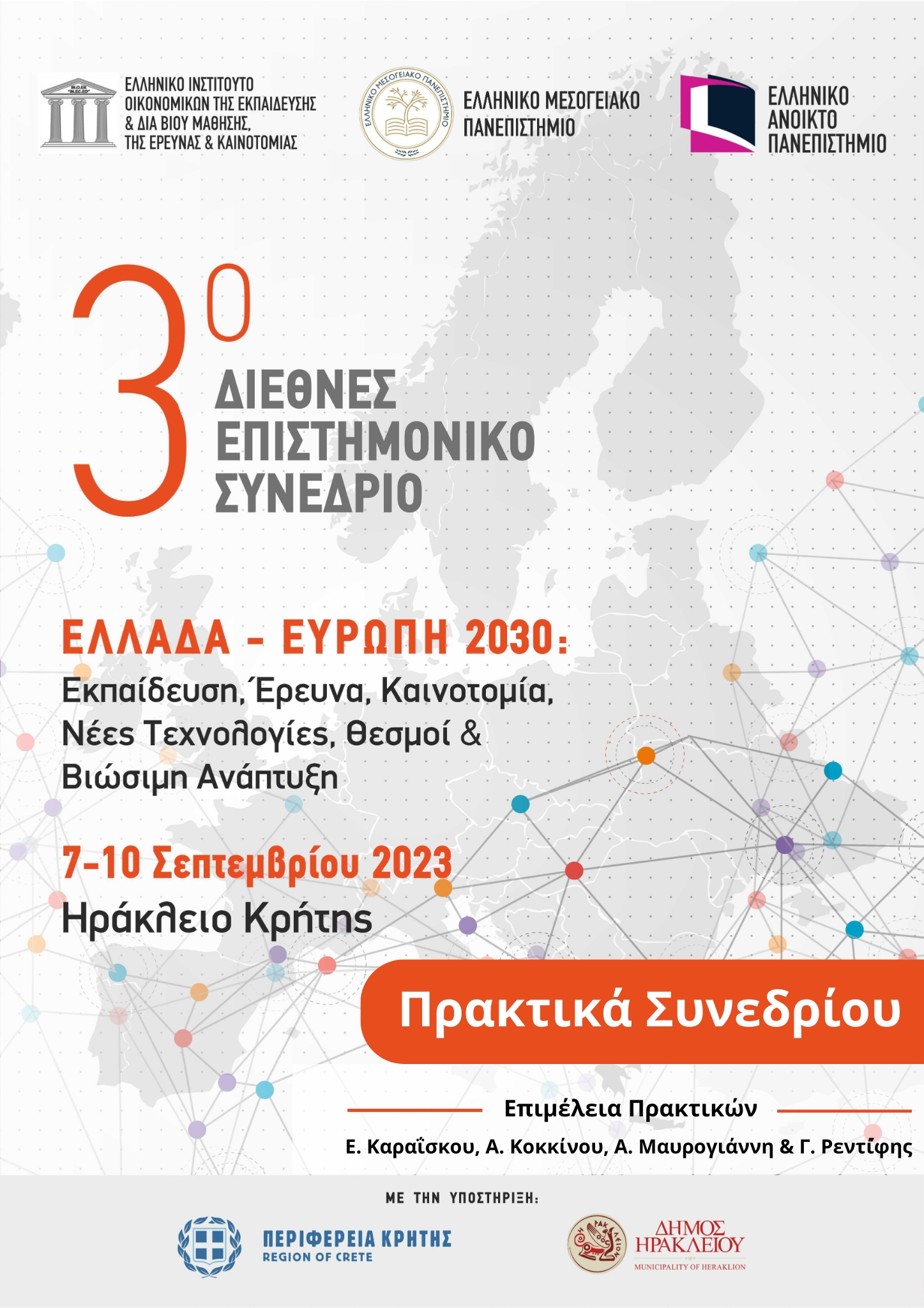Η εκπαίδευση και εργασία των γυναικών σε τομείς STEM, παράγων μεγέθυνσης της οικονομίας

Περίληψη
Περίληψη
Στην εργασία μας αυτή γίνεται επισκόπηση της διεθνούς βιβλιογραφία που αναφέρεται στην Εκπαίδευση STEM. Στο πλαίσιο της αναδεικνύεται η συνεισφορά των αντικειμένων STEM στην εκπαίδευση αλλά και την οικονομία. Καταγράφονται τα πλεονεκτήματα συμμετοχής και απασχόλησης των γυναικών στα αντικείμενα αυτά στο εκπαιδευτικό ειδικότερα και το εργασιακό γενικότερα. Γίνεται επισκόπηση ερευνητικών εργασιών οι οποίες εξετάζουν το ερώτημα κατά πόσο η απασχόληση των γυναικών σε τομείς STEM συμβάλλει δυνητικά στη μεγέθυνση ή/και ανάπτυξη των οικονομιών τόσο των υπό ανάπτυξη όσο και των αναπτυγμένων χωρών. Ιδιαίτερα επί των ημερών όπου η εποχή της κοινωνίας και της οικονομίας της γνώσης εγκολπώνει το εργαλείο της τεχνικής νοημοσύνης το «τρίγωνο της γνώσης» με «κορυφές» αντίστοιχα την Εκπαίδευση, την Έρευνα και την Καινοτομία τεκμηριώνει βιβλιογραφικά και προσδιορίζει τους βασικούς παράγοντες ανταγωνιστικότητας οι οποίοι είναι πολύ πιθανόν να αποτελέσουν τα προωθητικά της μεγέθυνσης ή/και ανάπτυξης της οικονομίας. Στο πλαίσιο αυτό καθίσταται αναγκαία η εκπαίδευση και απασχόληση των γυναικών με θέματα που άπτονται των αντικειμένων του STEM.
Abstract
In this paper the international literature on STEM Education is reviewed. Within this context, the contribution of STEM subjects to education and the economy is highlighted. The advantages of women's participation and employment in these subjects in education in particular and work in general are recorded. Research papers that address the question of whether women's employment in STEM fields potentially contribute to the growth and/or development of the economies of both developing and developed countries are also reviewed. Particularly today, with society and knowledge economy embracing technical intelligence, the so-called “triangle of knowledge” with its angle ends being respectively Education, Research and Innovation is documented bibliographically and identifies the main factors of competitiveness which are very likely to promote growth and/or development of economy. To this end, it becomes necessary to train and employ women with issues related to STEM subjects.
Λεπτομέρειες άρθρου
- Ενότητα
- Εισηγήσεις

Αυτή η εργασία είναι αδειοδοτημένη υπό το CC Αναφορά Δημιουργού 4.0.
Οι συγγραφείς των άρθρων που δημοσιεύονται στα πρακτικά του συνεδρίου για την «Εκπαίδευση, Δια Βίου Μάθηση, Έρευνα και Τεχνολογική Ανάπτυξη, Καινοτομία και Οικονομία»διατηρούν τα δικαιώματα πνευματικής ιδιοκτησίας επί των άρθρων τους. Άρθρα που δημοσιεύονται στα πρακτικά διατίθενται με άδεια Creative Commons 4.0 και σύμφωνα με την άδεια μπορούν να χρησιμοποιούνται ελεύθερα, με αναφορά στο/στη συγγραφέα και στην πρώτη δημοσίευση για μη κερδοσκοπικούς σκοπούς και με δικαίωμα τροποποίησης μόνον με παρόμοια διανομή (αν αναμείξετε, τροποποιήσετε, ή δημιουργήσετε πάνω στο υλικό, πρέπει να διανείμετε τις δικές σας συνεισφορές υπό την ίδια άδεια όπως και το πρωτότυπο)

